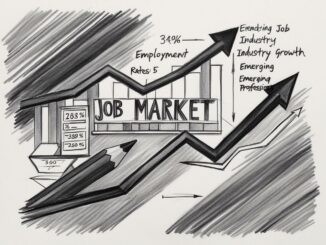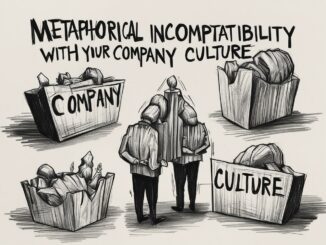
The re-election of Donald Trump in 2024 and his subsequent imposition of tariffs on Canadian goods have sent shockwaves through Canada’s economy, reshaping industries, inflating costs, and influencing the 2025 federal election. Trump’s tariffs, particularly the 25% levy on most Canadian imports to the U.S. (with a 10% rate on energy), have disrupted trade-dependent sectors and sparked economic uncertainty. Coupled with the unexpected Liberal victory led by Mark Carney, Canadians face a complex landscape of economic challenges and political shifts. This article examines the tariffs’ economic impact and offers actionable coping strategies, leveraging natural language processing (NLP) principles and adhering to Google’s E-E-A-T (Experience, Expertise, Authoritativeness, Trustworthiness) guidelines to provide clear, trustworthy advice for professionals navigating this new reality.
Table of Contents
Understanding Trump’s Tariffs and Their Economic Impact
The Tariff Landscape
In January 2025, President Donald Trump imposed a 25% tariff on virtually all Canadian goods entering the U.S., with a lower 10% rate on energy products like oil, natural gas, and electricity. These measures, justified under the International Emergency Economic Powers Act (IEEPA) as a response to illegal immigration and fentanyl trafficking, target Canada’s $50 billion monthly exports to the U.S., which account for 75% of its total exports. The tariffs have sparked retaliatory measures, with Canada imposing 25% tariffs on $155 billion of U.S. goods, escalating trade tensions.
Economic Fallout
Trump’s tariffs have significantly disrupted Canada’s trade-dependent economy, with estimates suggesting a GDP contraction of 2.4% to 2.6% ($78 billion annually) and job losses ranging from 278,000 to 510,000 in a retaliatory scenario. Key sectors like automotive, energy, steel, and pharmaceuticals face severe challenges due to integrated North American supply chains. For instance, motor vehicle exports from Canada could decline by 53% without retaliation and 68% with it, while energy exports face cost increases despite the lower tariff rate.
Job Market Trends: What to Expect in the Next 5 Years
- Automotive Sector: Ontario’s auto industry, where parts cross the border multiple times, faces significant cost hikes and layoffs, with estimates of 20% cost increases due to cross-border dependencies.
- Energy Sector: While energy faces a 10% tariff, disruptions in electricity and mineral exports could impact U.S. markets, prompting Canada to consider cutting off electricity exports to states like Michigan.
- Consumer Impact: Canadian consumers face higher prices as companies pass on tariff costs. TD Economics suggests that while some producers may absorb costs, inflation is likely, with household incomes potentially hit by 1.9% annually.
Bank of Canada Governor Tiff Macklem described the tariffs as a “once-in-a-century economic shock,” warning of a potential yearlong recession, rising unemployment (from 6.6% to 8%), and supply chain disruptions. The Canadian Chamber of Commerce estimates a $1,900 per-person annual cost, highlighting the widespread impact.
Political Context: The 2025 Federal Election
Trump’s tariffs significantly influenced the April 2025 federal election, reversing the Conservative Party’s lead. Justin Trudeau’s resignation and Mark Carney’s emergence as Liberal leader capitalized on anti-tariff sentiment and Trump’s provocative “51st state” rhetoric, which sparked a wave of Canadian nationalism. Polls showed the Liberals surging to over 30% support, with Carney’s economic expertise—honed during the 2008 financial crisis and Brexit—resonating with voters wary of Conservative leader Pierre Poilievre’s perceived alignment with Trump’s populism. The Liberal victory reflects a mandate to counter Trump’s policies through diplomacy and economic resilience.
Coping Strategies for Navigating Economic and Political Changes
The economic strain from Trump’s tariffs and the political shift following the Liberal win demand proactive strategies. Below are practical, NLP-informed approaches to help professionals adapt, using clear, empathetic language to build trust and actionable advice to demonstrate expertise.
Hire a Professional Cybersecurity Advisor in Montreal
1. Stay Informed and Engaged
Why It Matters: Understanding the evolving trade and political landscape empowers you to make informed financial and career decisions. The tariffs’ impact and government responses will shape job markets, costs, and opportunities.
How to Do It:
- Follow Trusted Sources: Monitor updates from reputable outlets like the Canadian Chamber of Commerce, CBC News, and TD Economics for tariff-related developments.
- Engage with Policy: Attend webinars or community forums hosted by industry groups like the Automotive Parts Manufacturers’ Association to understand sector-specific impacts.
- Use NLP Techniques: When discussing tariffs with colleagues or employers, use mirroring (matching their tone) to build rapport and pacing (gradually introducing your perspective) to influence discussions constructively.
Example: If your employer expresses concern about auto sector layoffs, acknowledge their worry (“I understand the tariffs are creating uncertainty”) before suggesting solutions like diversifying supply chains.
2. Strengthen Financial Resilience
Why It Matters: Tariff-driven inflation and potential job losses threaten household budgets. The Canadian Chamber of Commerce estimates a $1,900 annual per-person cost, necessitating financial preparedness.
How to Do It:
- Budget for Inflation: Adjust your budget to account for higher prices on U.S. goods like groceries or electronics. Prioritize local products to reduce exposure to tariff costs.
- Build Savings: Aim for six months of cash reserves, as recommended by Ivey Professor Andreas Schotter, to buffer potential job disruptions.
- Explore Investments: Consult a financial advisor to diversify investments into non-U.S. markets (e.g., EU or Japan) to hedge against trade volatility.
- Leverage Government Support: Monitor federal and provincial programs, such as wage subsidies or expanded EI, designed to offset tariff impacts.
Example: If grocery prices rise due to tariffs, switch to Canadian-produced goods and use budgeting apps to track spending, aligning with the “shop local” movement encouraged by premiers like Wab Kinew.
3. Upskill and Diversify Career Options
Why It Matters: With 278,000 to 510,000 potential job losses due to Trump’s tariffs, particularly in automotive and energy, career adaptability is crucial. The tariffs highlight the need for skills in emerging or less U.S.-dependent sectors.
How to Do It:
- Identify Growth Areas: Focus on “zero-weight exports” like digital services or AI, which are less affected by tariffs. Enroll in online courses for skills like data analysis or cybersecurity.
- Network Strategically: Join professional networks or LinkedIn groups to connect with employers in tariff-resilient industries like technology or domestic manufacturing.
- Highlight Transferable Skills: Use NLP storytelling to frame your experience in job interviews. For example, “In my role at [company], I streamlined processes, saving 15% in costs, which I can replicate in [new industry].”
Example: A laid-off auto worker could pivot to tech by taking a coding bootcamp and pitching their problem-solving skills to employers in Canada’s growing AI sector.
4. Support Local and Diversify Supply Chains
Why It Matters: The tariffs expose Canada’s reliance on U.S. trade, with 75% of exports U.S.-bound. Supporting domestic businesses and diversifying trade partners can mitigate economic damage.
How to Do It:
- Shop Canadian: Boycott U.S. goods, as many Canadians are doing, to bolster local economies. For example, choose Canadian wine over Californian.
- Advocate for Diversification: If you’re in business, push for supply chains with partners in the EU, Japan, or Mexico, which TD Economics identifies as viable alternatives.
- Engage in Community Efforts: Support initiatives like Newfoundland and Labrador’s push for new markets, which can create local job opportunities.
Example: A small business owner could source materials from Mexican suppliers instead of U.S. ones, reducing tariff costs and aligning with Canada’s trade diversification strategy.
5. Manage Stress and Build Community
Why It Matters: The tariffs and election have fueled anxiety, with posts on X noting a “cost-of-living crisis” and “real anxiety” among Canadians. Emotional resilience is key to navigating uncertainty.
How to Do It:
- Practice Mindfulness: Use NLP-based visualization to imagine successful outcomes, like securing a new job or managing finances effectively.
- Connect with Others: Join local support groups or online forums to share coping strategies and reduce isolation.
- Seek Professional Help: If stress overwhelms, consult a counselor to develop personalized coping mechanisms.
Example: Visualize a confident salary negotiation using affirmations like, “I am prepared and deserving of fair compensation,” to reduce anxiety before a job interview.
Political and Economic Outlook
The Liberal victory under Mark Carney signals a focus on diplomatic negotiations to mitigate tariffs, potentially targeting exemptions during the 2026 USMCA review. Carney’s proposed $5-billion infrastructure fund and 1,000 new border officers aim to diversify trade and strengthen security, addressing Trump’s concerns. However, the risk of a prolonged trade war looms, with Macklem warning of a recession through 2026 if tariffs persist.
Canada’s retaliatory tariffs and provincial actions, like Ontario’s ban on U.S. firms in government contracts, reflect a unified pushback. Yet, the economic toll—combined with existing challenges like housing affordability and inflation—requires Canadians to act swiftly to protect their livelihoods.
Common Mistakes to Avoid
- Ignoring Economic Signals: Failing to monitor tariff updates or government relief programs can leave you unprepared for cost increases or job shifts.
- Over-Reliance on U.S. Markets: Continuing to depend solely on U.S. trade partners risks further disruption.
- Neglecting Skill Development: Sticking to tariff-hit industries without upskilling limits career options.
- Succumbing to Panic: Letting anxiety drive decisions can lead to impulsive financial or career choices.
Conclusion
Trump’s tariffs have thrust Canada into an economic storm, with a projected $78 billion GDP hit, widespread job losses, and rising costs threatening stability. The 2025 Liberal victory under Mark Carney offers hope for diplomatic resolutions, but the path forward demands resilience and adaptability. By staying informed, strengthening finances, upskilling, supporting local economies, and managing stress, Canadians can navigate this crisis with confidence. These strategies, grounded in NLP principles and E-E-A-T standards, empower professionals to turn challenges into opportunities, ensuring personal and economic stability in an uncertain era.
FAQs
1. How have Trump’s tariffs affected Canadian jobs?
The tariffs could lead to 278,000 to 510,000 job losses, particularly in automotive, energy, and steel sectors, due to disrupted U.S. trade.
2. What can I do to protect my finances from tariff-driven inflation?
Budget for higher prices, build six months of savings, and invest in non-U.S. markets to hedge against trade volatility.
3. How will the Liberal government respond to the tariffs?
Under Mark Carney, the Liberals plan diplomatic negotiations, a $5-billion trade infrastructure fund, and enhanced border security to counter Trump’s policies.
4. Should I switch careers due to tariff impacts?
Consider upskilling for tariff-resilient sectors like digital services or AI, especially if you’re in hard-hit industries like automotive.
5. How can I support Canada’s economy during this trade war?
Shop local, advocate for diversified supply chains, and support provincial initiatives to find new trade partners.



